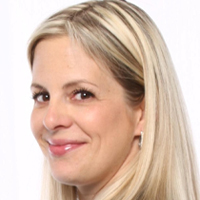
(This article has been translated from French.)
Quebec has been the only Canadian province to have a specific parental benefits program ever since 2006 when the Quebec Parental Insurance Plan (QPIP) was launched. This plan offers more generous and accessible benefits than those offered in other provinces through the federal employment insurance (EI) program.
In Quebec, as in the rest of Canada, the amount of benefits depends on the income earned during a specific period, and people with a high income receive more generous benefits than those with a lower income. However, an income supplement is provided for families with modest incomes, both in Quebec and elsewhere in the country.
In September 2021, Quebec enhanced the additional support offered to low-income parents, once again confirming its position as a North American leader in family support.
Until last year, QPIP provided a beneficiary with an increase in parental benefits (including those paid upon adoption) if net family income was less than $25,921. The threshold had not changed since the creation of the program more than 15 years earlier.
The result is that with inflation, the number of claimants qualifying for a benefit enhancement fell from 6.4 per cent in 2006 to less than five per cent in 2019. In other words, a growing number of low-income families did not qualify for more generous benefits.
Parental leave needs an overhaul
Redesign parental leave system to enhance gender equality
Several changes to better achieve objectives
Faced with this fact, Quebec decided to make several changes to QPIP to better assist low-income recipients. It raised the eligibility threshold for a benefits top-up to the equivalent of the annual minimum wage of a person who works 40 hours a week. The amount rose to $28,080 in 2021 from the previous level of $25,921. This threshold will now be indexed to minimum wage increases. In May 2022, it will rise to $29,640. In comparison, federal benefits paid through the EI program are still increased only for a family with income equal to or less than the previous $25,921 level. This threshold is the same in all provinces (outside Quebec) and territories, regardless of the cost of living.
The second change in Quebec is that the benefit calculation is now based on individual income instead of family income. A mother who earns a modest salary automatically qualifies for an increase in benefits, regardless of her partner’s income. Elsewhere in the country, the continued use of a family income threshold means that many women are excluded from obtaining an increase because their partner’s income is too high. In Quebec, the majority of recipients getting an increase in benefits are women.
Low-income parents who qualify for an increased benefit can see it reach up to 85 per cent or 100 per cent of their average weekly income now, depending on the choice of plan (basic or special), compared to 55 per cent to 75 per cent under the regular program for higher-income parents. Under the original program, the benefit replacement rate for low-income workers could not exceed 80 per cent of income.
Finally, under the new top-up rules, both parents can receive an increase in their benefits simultaneously if they both qualify. Before September 2021, the increase could be granted only to one parent when both received benefits at the same time. This had the effect of putting families at a disadvantage when both parents had low incomes and when both parents chose to receive their benefits simultaneously rather than consecutively.
The benefit enhancements for low-income workers in Quebec will allow around 17,000 parents – including 14,000 mothers – to obtain increased benefits compared to fewer than 6,000 previously. The new eligibility rules could triple the proportion of beneficiaries receiving the top-up. The cost of these changes is estimated to be $25 million per year in additional benefits, according to calculations by the Conseil de gestion de l’assurance parentale.
Sample calculations with the maximum top-up rate
Example 1: A worker living alone
Marie is a student who works part-time as a waitress. She is expecting a child and will raise him alone. Her average weekly income is $350. She opted for the special QPIP plan with an income replacement rate of 75 per cent.
Under the old rules and with an annual income of $18,200 the previous year, Marie would have been entitled to a weekly benefit of top-up of $280 (the basic benefit of $263 plus the boost of $17). The extra benefit based on a family revenue below $25,921 would give her 80 per cent of her income.
With the recent changes to QPIP, Marie’s weekly income is below the threshold of $540, which is the equivalent of the minimum wage for a 40-hour workweek. She would be eligible for the maximum increased weekly benefit under the new rules and would receive $350 per week – 100 per cent of her income.
Marie would suffer no loss of income during her leave. Over the duration of her parental leave, this could represent an additional $2,800 if she decides to use all 40 weeks of benefits available under the special plan.
Example 2: A couple
Ève and Olivier are expecting a child. They each earn $400 a week. Because their respective weekly income is below the threshold of $540, Ève and Olivier are both eligible for an increased weekly benefit. They are also entitled to the maximum increase under the new calculation rules. The couple opted for the special QPIP plan.
The increased weekly benefit payable to each would be $400 per week, or the equivalent of 100 per cent of their respective average weekly income. Without the improved top-up, it would be $300, or 75 per cent of $400.
Ève and Olivier would each receive $100 more per week under the new plan than they would under the old calculation. Since the couple’s family income was $41,600 the previous year, higher than the previous $25,921 admissibility threshold, neither Ève nor Olivier would have received a top-up before September 2021. Over the duration of their parental leaves, this could represent an additional $4,300 if the couple decides to use all 43 weeks of benefits available to them under the special plan.













